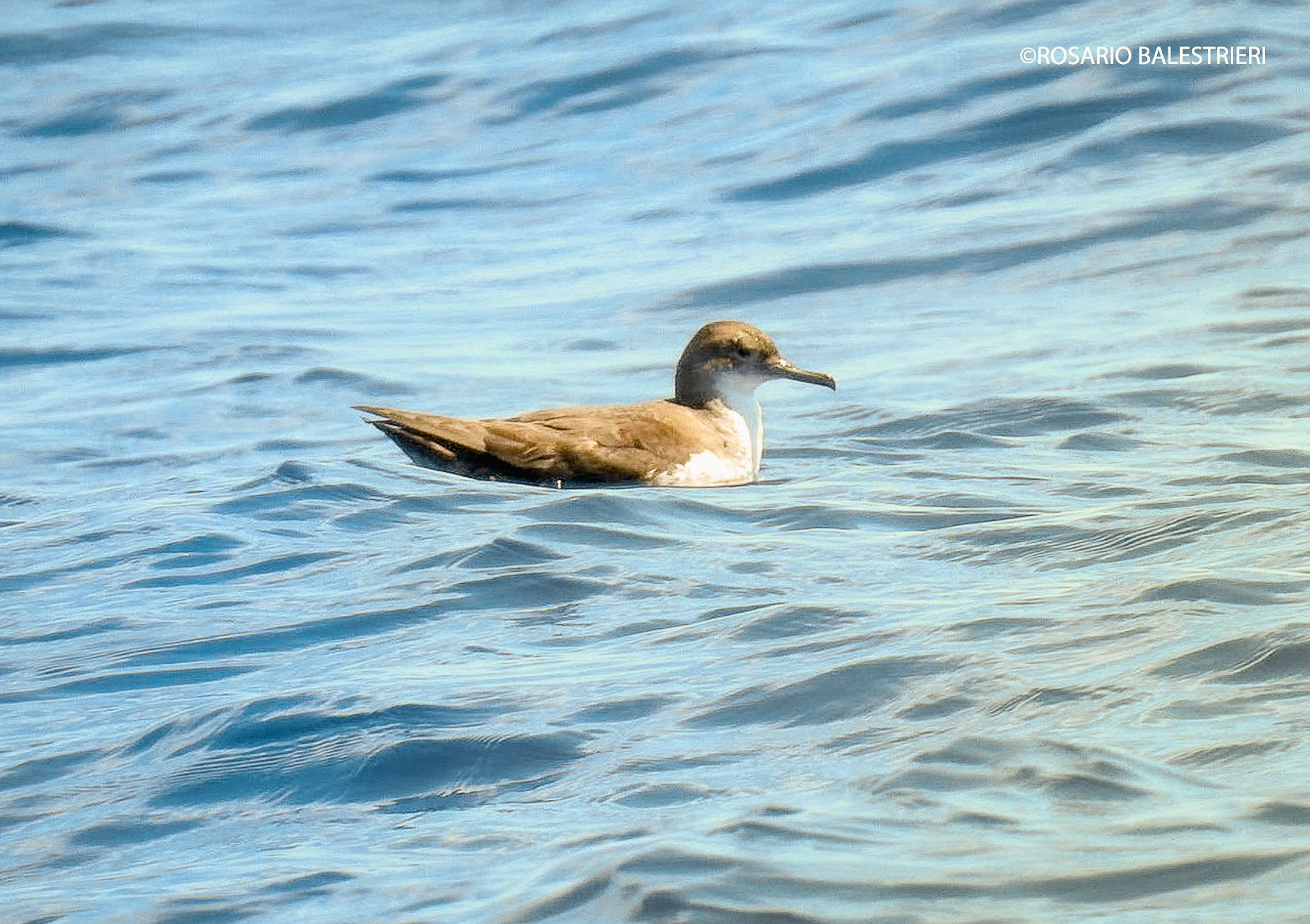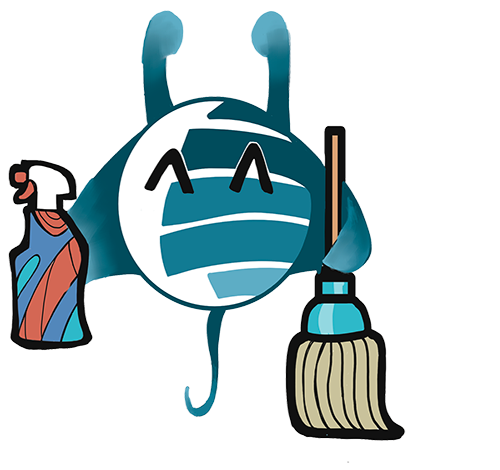The flight is long and demanding, the search frantic. Every day, when the color of the night gives way to the first light of dawn, until the setting sun floods the surface of the sea with gold.
They move for tens, even hundreds of miles, to find schools of small fish or in any case enough food to satisfy the voracious hunger of the chicks that wait, always alone, in the ravines between the rocks where the protective nests are laid. For part of the spring and for the whole summer, this is the daily mission that instinct imposes on the shearwaters to guarantee the future of the species. The small petrels display all their flying ability on the Mediterranean routes, where they spend the entire breeding season, before setting off again, alone, for the long winter journey across the Atlantic Ocean. Behaviours common, with some differences, to two different species, the Cory's shearwater and the Manx shearwater, of the same family Procellaridae, both frequenting the Italian coasts.
The Cory's Shearwater (Calonectris diomedea)
It is about fifty centimeters long and weighs 600 grams, with a short, rounded tail, narrow wings and a wingspan of up to one meter. On the head, the plumage is light gray, while on the back it is brown, with a white neck and belly, a yellow beak and pinkish legs. The body that serves the largest European shearwater to move, even for months, over the ocean expanses without ever touching the ground, flying for hours at a speed that can reach 50 kilometers per hour.
From autumn and throughout the winter, the birds range across the Atlantic, from north to south, reaching the coasts of Southern Africa and South America in search of food. Then, in March, the colonies return to life, always meeting in the same places, to begin a new breeding season in the warm climate of the Mediterranean basin, preferably on islands and islets far from the mainland or on the less anthropized coastal stretches from one side of the Mare Nostrum to the other. As the colonies gather, which can number thousands of individuals, couples meet again, which remain faithful over time, or new ones are formed among the young, who breed starting from the fifth year of life. Thus begins the phase of mating and building nests, mostly made in cracks in the rock walls overlooking the sea, sheltered from light and the elements.
In April, females lay one egg per pair. They will incubate it with the males, taking turns for the long daytime trips in search of food. Incubation lasts a couple of months, then at the end of June-July the hatching occurs and the chick-rearing phase begins. The chicks are nestlings, have gray plumage with bluish hues and are assisted by their parents only at night, when either the male or the female joins them to feed them, regurgitating what they have collected at sea with complex rituals, which have only been partially reconstructed by researchers.
The time spent in the nest with the chick lasts only when the sky is dark, because, even before daybreak, the adult goes back to sea to hunt fish, crustaceans and cephalopods. Fishing takes place in groups. The bird dives towards the prey, once identified, from about ten meters away and catches it on the surface or chases it underwater.
In October, the chicks begin to fly and leave the nest, in time for the autumn migration, which divides the couples and breaks up the colonies, until the beginning of spring.
Among the sites where the Cory's shearwater nests, there are many in Italy, such as Capraia, Pianosa in the Tuscan Archipelago and the Tremiti Islands. Of all of them, the most important in the entire Mediterranean is the island of Linosa, in the Sicilian archipelago of the Pelagie, whose sea is protected by a Marine Protected Area. The rocky walls of the island welcome about ten thousand pairs for nesting every year. After the birth of their chicks, they take flight every day, often reaching the coasts of Tunisia to refuel.
The Mediterranean Yelkouan Shearwater (Puffinus yelkouan)
Although it belongs to a different genus (Puffinus), the Mediterranean Yelkouan Shearwater, once considered a subspecies of the Atlantic Shearwater (Puffinus puffinus) and now recognized as an endemic species of the Mediterranean, has many characteristics and habits similar to the Cory's Shearwater, which is certainly larger in size. The Yelkouan Shearwater is in fact just 30/35 centimeters long and has a wingspan of less than a meter, between 70 and 84 centimeters. Darker on the back and whitish on the belly, it shows legs protruding from the tail when in flight. A condition in which it spends most of its life, in the open sea, searching for food for itself and its offspring. To catch prey, mostly small fish, it dives to great depths, but does not disdain recovering the remains that fishing boats throw away.
Its range is less extensive than that of the Cory's shearwater, since seasonal migrations take it to the Black Sea, always starting from the Mediterranean, where it spends the good season and nests. But the Yelkouan shearwater also prefers islands, islets and rocky coastal environments, sheltered from human interference. And in fact the favourite places in Italy, where over 60 percent of the world population of Yelkouan shearwaters stops for reproduction, are Capraia and other Sardinian islands, Montecristo and other sites in the Tuscan Archipelago, Lampedusa and the Phlegraean islet of Vivara. Right in Sardinia, in Tavolara, where there is also a Marine Protected Area, the largest colony of those birds is concentrated with a number of couples that has been estimated to be well over ten thousand and, according to some researchers, even double.
The incubation of the single egg lasts two months, done in turns by the male and the female, and ends with the hatching and birth of the chick, which flies away in July. Like other shearwaters, the lesser shearwater also visits the chick to feed it only at night, while it stays out all day, until sunset.
The myth-inspiring ritual of shearwaters at sunset
When the sun sets on the horizon, hundreds of birds begin to approach their nests. After flying long distances, they land on the surface of the sea, lulled by the waves, waiting for darkness to fall. The evening ritual, also common to shearwaters, sees all the birds emit calls similar to children's wails, which echo loud and piercing in the silence of the sea at dusk. Sounds that herald the return of the adults to their nests, to finally feed their chicks.
The evening lament of the shearwaters, which resembles calls in an unknown human language. It echoes along the coasts and during the summer, or where and when the ancients sailed, and has therefore been linked to the mythical song with which the Sirens ensnared sailors, but which failed to stop Ulysses. Especially since the Greeks represented the Sirens as women with the body of a bird. In the song of the shearwaters, also called Diomedee like the Tremiti Islands, the myth also identifies the daily laments of the companions of the hero of the Trojan War, Diomedes, who, upon the mysterious disappearance of their captain on the island of San Domino, were transformed into birds by Aphrodite.
Protected species in decline
For about half a century, colonies of shearwaters have been in constant progressive decline everywhere, including in Italy. This justifies and supports the negative assessment of the health status of both species that nest in the Mediterranean. There are many causes for this now consolidated trend, starting with the loss of coastal habitats sacrificed to urbanization.Then there is marine pollution and intensive fishing, especially of anchovies, which reduce fish resources and impoverish the stretches of sea near the nesting sites. Fishing nets are another enemy, as are baited fishing hooks that are often ingested by birds, leading to their death.The human-induced proliferation of black rats (Rattus rattus) has had a very strong impact on the islands where the colonies gather. In fact, the rats feed on the eggs and also on the chicks, ruining the annual broods, with very serious consequences, so much so that campaigns to eradicate rats from Montecristo and Tavolara have been launched in recent years to save generations of shearwaters. Feral cats are also increasingly numerous predators for the two species, which are declared vulnerable.This is why they have been included in the Bern and Barcelona Conventions and are protected species under the European Union Birds Directive, thanks to which scientific studies and monitoring campaigns have multiplied to detect the size of the colonies and investigate their elements of vulnerability, in order to then develop targeted conservation strategies.



